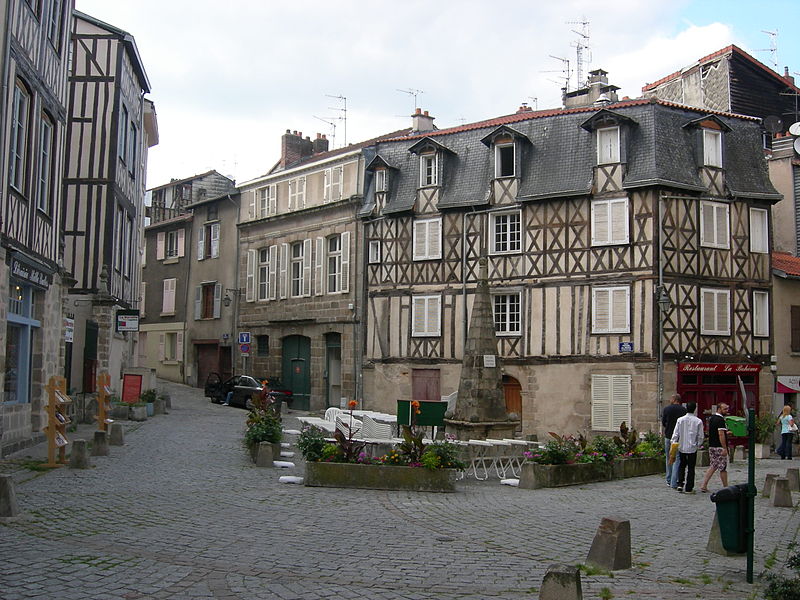BOUSSAC, France — The region around Limoges has been known since medieval times for its weavers. The art of tapestry-making once flourished there for many generations, passing down from father to son. Today the towns of Aubusson and Felletin are no longer famous for that particular specialty, though remnants of those ancient times are still to be found there in the form of museums and studios. Shops in Aubusson’s main street still display colored wools of all kinds in their windows for the benefit of the many local hobbyists.
In the castle perched atop the steep precipice overlooking the Creuse river in the nearby town of Boussac one may take a guided tour of the building and sense something of the medieval atmosphere that once prevailed there. The grand dining hall, where lavish meals were once served to hundreds of revelers, now stands empty, and the guide is quick to point out that this part of the castle was destroyed by the British in the fourteenth century (whereupon this British-born visitor felt obliged to apologize). A fascinating book describing the tapestries recently came into my hands, providing with me with an insight into these beautiful works of art.
One of the rooms in the castle, where much of the original furniture may still be found, was occupied by the French writer, George Sand (Aurore Dudevant) in the 1830s. In her novel, Jeanne, she describes the castle and the surrounding countryside, also mentioning the impressive set of tapestries entitled ‘The Lady and the Unicorn’ that adorned the walls at that time. In later years, as the devastation wrought by time, rats and mould threatened to cause irreparable damage to the tapestries, they were purchased for the French nation and hung, after extensive restoration, in the Cluny Museum in Paris. One or two reproductions may still be seen in the castle, but not the originals.
The early history of the six remaining tapestries (there may once have been more), is not absolutely clear. What is known is that they were produced in France for one of the members of the nobility on the basis of designs made by a medieval master. In fact, the production of the tapestries required the skills of an artist or artists who could produce the basic design, those who could transfer it onto a cartoon, or basis for the weaver, and extremely skillful weavers who were masters of the intricate art of producing the finished tapestry.
The six huge tapestries, each one different but depicting similar principal figures – a lady, her maidservant, a lion and a unicorn – also show a myriad of smaller animals, as well as birds and flowers of various kinds and sizes in a wealth of colors, covering each tapestry in abundant detail that is both fascinating and a delight to the eye. Contemporary scholars have concluded that each tapestry concerns one of the five senses, smell, taste, touch, sight, hearing, while the last one bears the inscription ‘Mon seul desir,’ which could mean either ‘My one desire’ or ‘Only my will.’ Whether this refers to some concept of romantic love or is a philosophical pronouncement is still an open question. It has been suggested that the tapestries were commissioned for the wedding or betrothal of the son and daughter of two noble families, but no records have been found to verify this assumption.
The lion and the unicorn are well-known heraldic figures, and are even to be found in the royal coat of arms of the United Kingdom, though no association with England is known. The production of the tapestries in the fourteenth or fifteenth centuries connects the traditions of the medieval and renaissance periods of art. Be that as it may, the tapestries themselves are works of great beauty and interest, and make a visit to the Cluny Museum a must for my next visit to Paris.
Republished from San Diego Jewish World


























